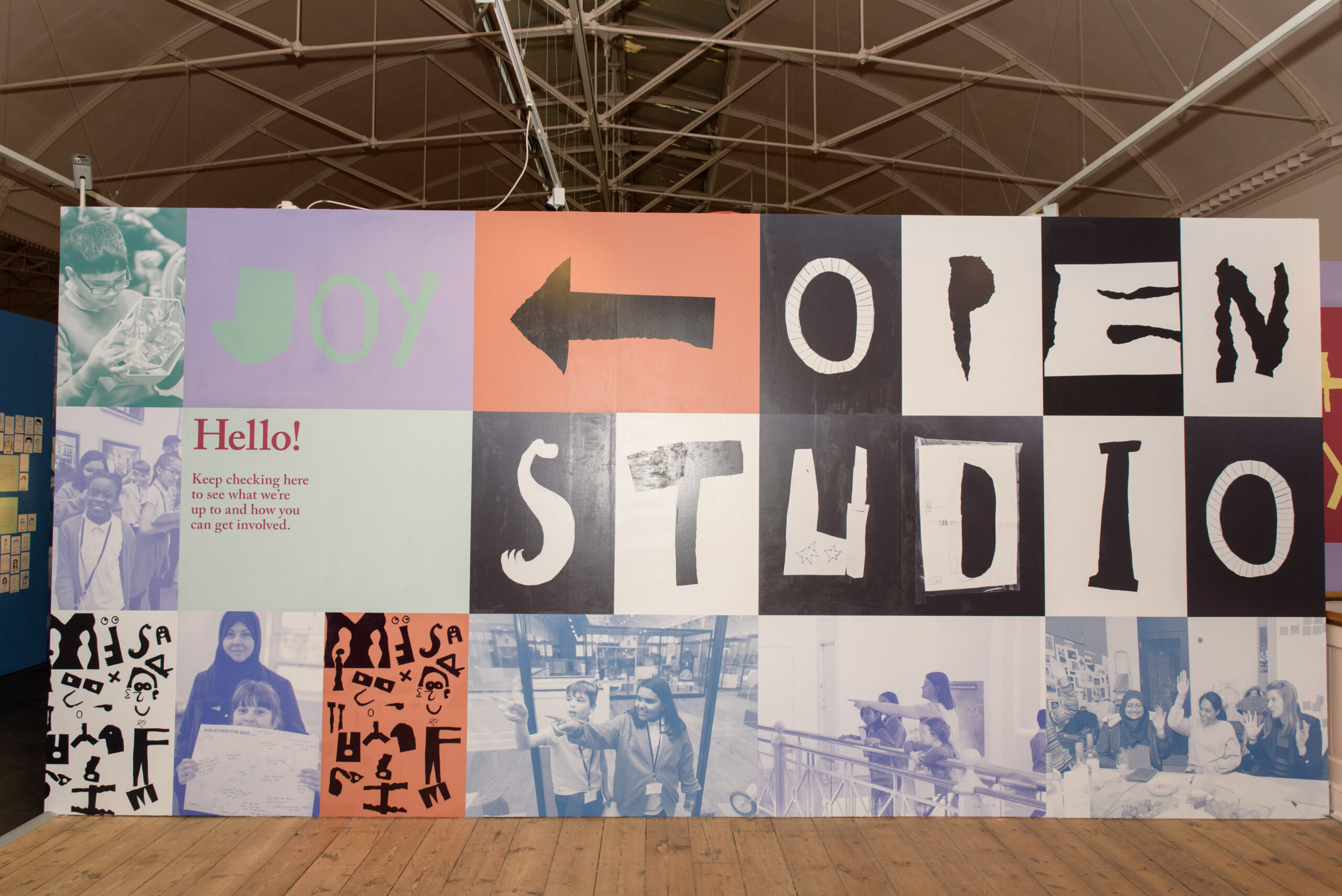
The article was written pre-pandemic but it turned out to be very current especially because of the pandemic itself, thus highlighting the role of the pandemic as an “accelerator” of some trends.
By Daniel Gava, Brand Strategy Advisor to the Architecture and Design Industry
Today we want the environments we interact with to enhance as much as possible the ideal experience we want to get from them. Interior design is progressively becoming the perfect candidate to achieve this ambition.
Until recently, interior design was regarded by the general public mainly as decoration and most interior design choices were driven typically by the latest trends of the industry or by established styles or cultural conventions.
Today instead, interior design plays an increasingly influential role in our private and professional lives, and attracts more thoughtful consideration.
The advent of the internet and the consequent access to a great deal of information, a growing tendency of our society towards the exaltation of individual expression and the need to regularly slow down the pace of our modern lifestyle, have produced more educated users who constantly look for a better relationship with their own living, working and entertaining spaces.
If once interior design was conceived mostly to determine the atmosphere or the tone of an environment, now it is intended to simultaneously enhance the user experience and remove the unnecessary complexity that was there for the sake of mere aesthetics.
This contemporary interpretation of interior design is quite powerful, and goes beyond being just a another short-lived trend of an ever-changing unpredictable market: feels good is now more important than looks good when referred to any environment, and this triggers some radical permanent change in many circumstances.
Within the design industry for example, it forces furniture manufactures to expand their offer of available finishes in order to cope with an ever-increasing demand for product customisation, or urges architects to allow their clients to play a more active role in the early creative process and share with them more design options and research than in the past.
A design institution, the V&A in London, is currently involving children in the design process of the new galleries for their Museum of Childhood so that the end results reflect the way they will want to eventually experience the museum.
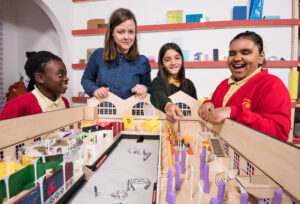
Gill Lambert from AOC Architecture running a co-design session with pupils from a local school. ©V&A Museum of Childhood
Modern interior design doctrine also advises business organisations to turn their workplaces into friendly environments where employees can nurture their wellbeing and thus improve productivity and loyalty, and banks to install more cheerful lounge furniture in their branches to reduce the distance with their customers.
At home we can now indulge in automation and integrated technology by configuring our appliances, furniture and lighting with our smartphones. We demand more and more that spaces adapt to us and to experience them according to our needs and desires, not the other way around.
In the entertainment business—and the movie industry especially—interior design has always been the undisputed king of the whole atmosphere of almost any movie. In recent years however, there are increasingly more connections between what is on the screen and the real world. More movie interiors are inspired by real homes and more set decorators are happy to use furniture or accessories that the audience can easily recognise to evoke familiarity in the viewer. And should the viewer want to mimic the experience of a specific scene from his favourite movie at home, he can now easily find companies that sell authorised replicas of iconic furniture or other props featured in most blockbusters.
Elsewhere in the industry, this passionate dialogue between interior design and user experience is even taken to the next level, where the experience that the interior design induces is not necessarily perceived as generated by it, as in the previous examples.
It is the case of independent boutique cinemas, which unlike the multiplex chains, display world-class interiors. These cinematic sanctuaries are a joyful celebration of urban escapism, where the interiors transcend their functional role by magically inducing the users to disconnect from the outside world and immerse themselves in a total viewing experience.
Lisa Burdge, owner of the famed Olympic Studios Cinema and Co-Founder of the recently opened The Cinema at Selfridges in London, is undoubtedly one the most talented experts in making sure that the cinema interiors are the discreet but fundamental gateway to the perfect viewing experience.
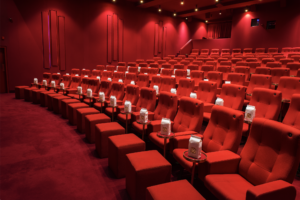
©Screen 1,Olympic Studios. Photo: Empire Design
She explains that there is a lot of testing, research and dedication behind the magic: some key factors are the selection of specific fabrics, textures and colours, superior seating comfort, the correct distance between seat rows, stage curtains to give a sense of drama, a state-of-the-art sound system, with properly positioned speakers, and cocktail side tables placed just-so. But most importantly, these elements need to blend invisibly in the screening room and absolutely not interfere or distract. Only in this way do they become instrumental in making the audience focus only in the viewing experience.
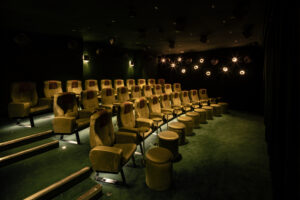
©Photo: Empire Design
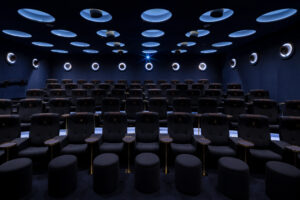
©Photo: Empire Design
Lisa admits that it is most rewarding when the audience give their feedback on how good they felt and how much they enjoyed watching the movie in her cinemas, even though they possibly might be not at all aware that it is exactly that combination of interior or technical details that triggered their positive reactions.
Ideally we would like to have the same positive feedback from our experience of any environment we interact with, be it relaxation, excitement, focus, motivation, enjoyment or contentment.
Certainly, we are now aware that we can define our preferred space and our interaction with it, thanks to the contemporary evolution of interior design, which will guide us into focussing on those elements of the equation that make us feel good.
.
.
.
Daniel Gava has more than twenty years of professional experience in the design industry and has been employed in primary positions within the departments of marketing, PR, sales and board of directors in well-known international high-end furniture manufacturers. He lived and worked in various countries including Italy, Spain and United States and since 2011 he is based in London where he currently works as an independent advisor assisting companies and designers grow their brand and business. Daniel is an innovator and understands that business is all about great relationship building. He has consistently been one of the most perceptive, generous and intelligent presences on the London design scene for a number of years and he has proven to be a tireless champion of design and the design industry, bringing fresh thinking and contributing to the diffusion of creativity and design culture in London. He is Design Patron of the Design Museum, Affiliate Member of the Royal Institute of British Architects and Ambassador of the London School of Architecture.
Content Curation by Annie Markitanis